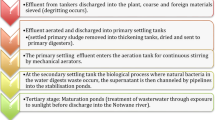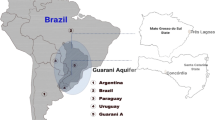Abstract
Waterborne diseases have critical public health issues and socioeconomic relevancy worldwide. Various viral pathogens are ordinarily associated with waterborne diseases. Six-year-surveillance (a total of 20 times) of norovirus, hepatitis A virus, group C rotavirus, and enterovirus was conducted at five raw water sampling sites including two lakes (Lakes Soyang and Juam), Hyundo region of Geum River in Daejeon City, and Guui region of Han River in Seoul Metropolitan City and Moolgeum region of Nakdong River in Gimhae City which are located near two water intake plants. In this study, we routinely investigated virus contamination in water samples through reverse transcription polymerase chain reaction (RT-PCR) and integrated cell culture RT-PCR with high sensitivity and specificity. A total 100 samples were tested. Most of the targeted viruses were found in 32% of the samples and at least one of the indicator bacteria was detected in 65% of these occurrences. Among all the detected viruses, enterovirus was the most prevalent with a detection frequency of 12% and 2.71 MPN/10 L on average, while hepatitis A virus was the least prevalent with a detection frequency of 4%. Nearly all of the analyzed viruses (except for group C rotavirus) were present in samples from Han River (the Guui region), Geum River (the Hyundo region), Lake Juam, and Nakdong River (the Moolgeum region), while group C rotavirus was detected in those from the Guui region. During the six-year sampling period, the targeted waterborne viruses in water samples exhibited seasonal patterns in their occurrence that were different from the indicator bacteria levels in the water samples. The fact that they were detected in the five representative Korean water environments makes it necessary to establish the chemical and biological analysis systems for waterborne viruses and sophisticated management systems.
Similar content being viewed by others
References
Ashbolt, N.J. 2015. Microbial contamination of drinking water and human health from community water systems. Curr. Environ. Health Rep. 2, 95–106.
Blunden, J. and Arndt, D.S. 2016. State of the climate in 2015. Bull. Amer. Meteor. Soc. 97, S1–S275.
Bradt, K., Monazahian, M., Bailot, A., and Heckler, R. 2005. Norovirus infections [Norovirus — Erkrankungenl]: annual report of the public health authority of the federal state of lower Saxony, pp. 23–25. Germany (NGLA).
Canter, L. 1997. Nitrates in Groundwater, CRC Press, Boca Raton, Florida, USA.
Cook, S.M., Glass, R.I., LeBaron, C.W., and Ho, M.S. 1990. Global seasonality of rotavirus infections. Bull. World Health Organ. 68, 171–177.
de Graaf, M., van Beek, J., and Koopmans, M.P.G. 2016. Human norovirus transmission and evolution in a changing world. Nat. Rev. Microbiol. 14, 421–433.
de Graaf, M., van Beek, J., Vennema, H., Podkolzin, A.T., Hewitt, J., Bucardo, F., Templeton, K., Mans, J., Nordgren, J., Reuter, G., et al. 2015. Emergence of a novel GII.17 norovirus-end of the GII.4 era? Euro. Surveill. 20, 21178.
Estes, M.K. and Greenberg, H.B. 2013. Rotaviruses. In Knipe, D.M. and Howley, P.M. (eds.), Fields virology, 6th edn., pp. 1347–1401. Lippincott Williams & Wilkins, Philadelphia, USA.
Fares, A. 2015. Seasonality of hepatitis: a review update. J. Family Med. Prim. Care 4, 96–100.
Fong, T.T. and Lipp, E.K. 2005. Enteric viruses of humans and animals in aquatic environment: health risks, detection, and potential water quality assessment tools. Microbiol. Mol. Biol. Rev. 69, 357–371.
Gerba, C.P. 1988. Methods for virus sampling and analysis of ground water. In Collins, A.G. and Johnson, A.I. (eds.), Ground-water contamination: Field methods, pp. 343–348. American Society for Testing and Materials, Philadelphia, USA.
Grabow, W.O.K. 2007. Overview of health related water virology. In Albert, B. (ed.), Perspectives in Medical Virology, pp. 1–25. Elsevier, Amsterdam, Netherland.
Grassly, N.C. and Fraser, C. 2006. Seasonal infectious disease epidemiology. Proc. Biol. Sci. 273, 2541–2550.
Griffin, D.W., Lipp, E.K., McLaughlin, M.R., and Rose, J.B. 2001. Marine recreation and public health microbiology: quest for the ideal indicator. BioScience 51, 817–825.
Hall, T.A. 1999. BioEdit: a user-friendly biological sequence alignment editor and analysis program for Windows95/98/NT. Nucl. Acids Symp. 41, 95–98.
Hay, S.I., Cox, J., Rogers, D.J., Randolph, S.E., Stern, D.I., Shanks, G.D., Myers, M.F., and Snow, R.W. 2002. Climate change and the resurgence of malaria in the East African highlands. Nature 415, 905–909.
ICTV, International Committee on Taxonomy of Viruses. 2018. ICTV Master Species List 2018. 10th Rep. http://www.ictvonline.org/.
Jeong, H.S., Lee, K.B., Jeong, A.Y., Jo, M.Y., Jung, S.Y., Ahn, J.H., Jee, Y., Kim, J., and Cheon, D.S. 2011. Genotypes of the circulating rotavirus strains in the seven prevaccine seasons from September 2000 to August 2007 in South Korea. Clin. Microbiol. Infect. 17, 232–235.
Jiang, B., Dennehy, P.H., Spangenberger, S., Gentsch, J.R., and Glass, R.J. 1995. First detection of group C rotavirus in fecal samples of children with diarrhea in the United States. J. Infect. Dis. 172, 45–50.
Jubelt, B. and Lipton, H.L. 2014. Enterovirus/picornavirus infections. Handb. Clin. Neurol. 123, 379–416.
Kalkan, S. and Altuğ, G. 2015. Bio-indicator bacteria & environmental variables of the coastal zones: The example of the Güllük Bay, Aegean Sea, Turkey. Mar. Pollut. Bull. 95, 380–384.
Kim, K.H., Suh, I.S., Kim, J.M., Kim, C.W., and Cho, Y.J. 1989. Etiology of childhood diarrhea in Korea. J. Clin. Microbiol. 27, 1192–1196.
Kim, H.J., You, J.Y., and Park, C.J. 2017. Review of sewage and sewage sludge treatment in Korea. Int. Proc. Chem. Biol. Environ. Eng. 101, 67–73.
Kimura, M. 1980. A simple method for estimating evolutionary rates of base substitutions through comparative studies of nucleotide sequences. J. Mol. Evol. 16, 111–120.
Lee, B.R., Lee, S.G., Park, J.H., Kim, K.Y., Ryu, S.R., Rhee, O.J., Park, J.W., Lee, J.S., and Paik, S.Y. 2013. Norovirus contamination levels in ground water treatment systems used for food-catering facilities in South Korea. Viruses 5, 1646–1654.
Leclerc, H., Schwartzbrod, L., and Dei-Cas, E. 2002. Microbial agents associated with waterborne diseases. Crit. Rev. Microbiol. 28, 371–409.
Marshall, J.A., Yuen, L., Catton, M.G., and Wright, P.J. 1999. Summer vomiting disease? Med. J. Aust. 171, 686–687.
McKnight, K.L. and Lemon, S.M. 2018. Hepatitis A virus genome organization and replication strategy. Cold Spring Harb. Perspect. Med. 8, a033480.
Melnick, J.L. 1996. Enteroviruses: polioviruses, coxsackieviruses, echoviruses and newer enteroviruses, In Fields, B.N., Knipe, D.M., Cbanock, R.M., Monath, T.P., Melnick, J.L., Roizman, B., and Straus, S.E. (eds.), Fields Virology pp. 583–663. Lippincott-Raven Publisherss, Philadelphia, USA.
Nainan, O.V., Xia, G., Vaughan, G., and Margolis, H.S. 2006. Diagnosis of hepatitis A virus infection: a molecular approach. Clin. Microbiol. Rev. 19, 63–79.
Nilsson, M., Svenungsson, B., Hedlund, K.O., Uhnoo, I., Lagergren, A., Akre, T., and Svensson, L. 2000. Incidence and genetic diversity of group C rotavirus among adults. J. Infect. Dis. 182, 678–684.
Paik, S.Y. 2009. Research on the contamination levels of norovirus in Food catering facilities. pp. 1–150. Korean Food & Drug Administration, Osong, Korea.
Pennsylvania Department of Environmental Protection (PADEP). 2019. Pa. Code § 109.301. General monitoring requirements. http://www.pacodeandbuUetin.gov/Display/pacode?ffle=/secure/pacode/data/025/chapter109/s109.301.html&searchunitkey-words=water%2Cquality&origQuery=water%20quality&operator=OR&title=null.
Pons-Salort, M., Oberste, M.S., Pallansch, M.A., Abedi, G.R., Takahashi, S., Grenfell, B.T., and Grassly, N.C. 2018. The seasonality of nonpolio enteroviruses in the United States: patterns and drivers. Proc. Natl. Acad. Sci. USA 115, 3078–3083.
Prüss, A., Kay, D., Fewtrell, L., and Bartram, J. 2002. Estimating the burden of disease from water, sanitation, and hygiene at a global level. Environ. Health. Perspect. 110, 537–542.
Reynolds, K.A., Gerba, C.P., Abbaszadegan, M., and Pepper, L.L. 2001. ICC/PCR detection of enteroviruses and hepatitis A virus in environmental samples. Can. J. Microbiol. 47, 153–157.
Rice, E.W., Baird, R.B., Eaton, A.D., and Clesceri, L.S. 2012. Standard Methods for the Examination of Water and Wastewater. 22nd edn., American Water Works Association, Washington DC, USA.
Sánchez-Fauquier, A., Roman, E., Colomina, J., Wilhelmi, I., Glass, R.I., and Jiang B. 2003. First detection of group C rotavirus in children with acute diarrhea in Spain. Arch. Virol. 148, 399–404.
Sattar, S.A., Jason, T., Bidawid, S., and Farber, J. 2000. Foodborne spread of hepatitis A: Recent studies on virus survival, transfer and inactivation. Can. J. Infect. Dis. 11, 159–163.
Sidhu, J.P.S. and Toze, S.G. 2009. Human pathogens and their indicators in biosolids; a literature review. Environ. Int. 35, 187–201.
Siebenga, J.J., Vennema, H., Zheng, D.P., Vinjé, J., Lee, B.E., Pang, X.L., Ho, E.C., Lim, W., Choudekar, A., Broor, S., et al. 2009. Norovirus illness is a global problem: emergence and spread of norovirus GII.4 variants, 2001–2007. J. Infect. Dis. 200, 802–812.
Sun, X., Wang, L., Qi, J., Li, D., Wang, M., Cong, X., Peng, R., Chai, W., Zhang, Q., Wang, H., et al. 2018. Human group C rotavirusVP8*s recognize type A histo-blood group antigens as ligands. J. Virol. 92, e00442–18.
Tamura, K., Peterson, D., Peterson, N., Stecher, G., Nei, M., and Kumar, S. 2011. MEGA5: Molecular evolutionary genetics analysis using maximum likelihood, evolutionary distance, and maximum parsimony methods. Mol. Biol. Evol. 28, 2731–2739.
Than, V.T., Jeong, S., and Kim, W. 2014. A systematic review of genetic diversity of human rotavirus circulating in South Korea. Infect. Genet. Evol. 28, 462–469.
Thuener, J. 2017. Hepatitis A and B infections. Prim. Care 44, 621–629.
USGCRP. 2016. The impacts of climate change on human health in the United States: a scientific assessment. Crimmins, A., Balbus, J., Gamble, J.L., Beard, C.B., Bell, J.E., Dodgen, D., Eisen, R.J., Fann, N., Hawkins, M.D., Herring, S.C., et al. (eds.) pp. 1–312. US Global Change Research Program, Washington DC, USA.
van Beek, J., Ambert-Balay, K., Bottledoom, N., Eden, J.S., Fonager, J., Hewitt, J., Iritani, N., Kroneman, A., Vennema, H., Vinjé, J., et al. 2013. Indications for worldwide increased norovirus activity associated with emergence of a new variant of genotype II.4, late 2012. Euro Surveill. 18, 8–9.
WHO, World Health Organization. 2017. Guidelines for Drinking-water Quality, 4th edn, World Health Organization, Geneva, Switzerland.
Wu, X., Lu, Y., Zhou, S., Chen, L., and Xu, B. 2017. Impact of climate change on human infectious diseases: Empirical evidence and human adaptation. Environ. Int. 86, 14–23.
Acknowledgments
This research was supported by grants from the National Institute of Environmental Research of Korea (NIER-2018-01-02-064, TSK, OJR, and SSL).
Author information
Authors and Affiliations
Corresponding authors
Additional information
Conflict of Interest
The authors declare no conflict of interest.
Rights and permissions
About this article
Cite this article
Bahk, Y.Y., Kim, MH., Kim, TS. et al. Occurrence of four waterborne viruses at five typical raw water resources in the Republic of Korea during August 2013 to February 2019. J Microbiol. 58, 915–925 (2020). https://doi.org/10.1007/s12275-020-0231-0
Received:
Revised:
Accepted:
Published:
Issue Date:
DOI: https://doi.org/10.1007/s12275-020-0231-0




